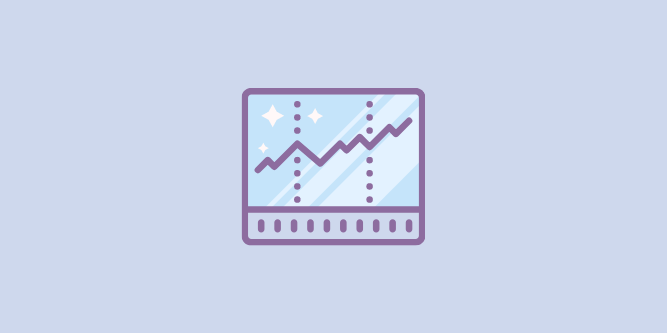When it comes to earning money online, there is something glamorous about the notion of making money from stocks.
While you can earn money from a blog, this is a slow process that takes a lot of time and is never guaranteed to make you rich. And while you can make money from Instagram, the same limitations apply (that, and the image of the typical influencer is not always a flattering one!).
Investing in stocks though, means playing with big money. It means you’re taking risks. It calls to mind scenes from films like Limitless.
It’s sexy.
And it really can lead to HUGE wins (and losses) in a short amount of time.
In this post, we’re going to look at how to make money with stocks.
The Basics
First, we need to address the basics.
There are really two ways to make money with stocks. These are day trading and long-term investing. The difference is as follows:
Day Trading: This means taking advantage of extremely rapid fluctuations in share values. A small variation can potentially earn you a lot of money if you act quickly. You’ll be buying and selling stocks in hours or even in minutes, but you can potentially stand to earn or lose thousands every single day.
Long Term Investing: This is a much more stable but long-term form of investing. Investing in stocks and shares in a long-term sense will work like investing in a bank account (and this is actually how banks provide you with interest!). The difference is that if you get it right, the interest is MUCH higher – as much as 10% annually on average. So if you put $100,000 into the stock market, you could be earning $10,000 per year! That’s almost a full time salary.
But for that to happen you a) need the investment to being with. And you b) need the know-how.
How to Start Long-Term Investing
Investing long-term in stocks and shares is something that a lot of people are interested in – and for good reason. We’ve seen just how much money you can make from this if it goes well!
But it’s also quite complicated isn’t it? With a lot of jargon and no obvious place to start. So how do you go from being interested in trading, to being a trader? Let’s take a look at how to buy shares and start trading.
Choose Something You Know
Sure, you could choose to invest in a big procurement company, but if you don’t know how that industry operates then you’re making things unnecessarily complicated for yourself. Pick something that you know, that you’re interested in and that you’re passionate about. This way you’ll have at least a little less new jargon to learn. Enjoy reading comics? Marvel may be a good choice. Love technology? Apple is a pretty solid bet these days.
Open a Trading Account
Of course buying shares means you’ll need a trading account. This in turn means going to your bank, or it means going to a broker depending on the type of trading you want to do.
If you’re looking for a long term investment in stocks and shares, then speaking with your bank is a great way to start
. This way, you’ll be able to arrange a meeting with an account manager and they can talk you through the basics and your options. A banker will put these into a Stocks & Shares ISA for you, or into a similar type of account.
If you’re looking to start trading online, then look for a broker (or a share dealing platform) – but just make sure that you do your research and read reviews before you sign up. The good news here is that you’ll still get given an account manager and they can help talk you through the process.
Just search for the term “share dealing platform” and you’ll find a ton to get started with.
Ideally, you’ll want to open up what is called a nominee account. That means you won’t need to worry about any of the paperwork involved in actually “holding” the share of the business. Just make sure you don’t forget to keep checking in on your shares (more on this in a moment).
If you’re nervous, many of these sites let you open a ‘practice account’ which means you’ll be able to learn to trade by investing in shares with faux money and seeing how they would have performed.
Best of all though? Find someone you trust who knows what they’re doing and ask them to show you in person! This may require a beer in exchange, but you can consider that your first investment.
Candlesticks
So you’ve spoken to your bank manager, or gone through a broker, and you’ve bought yourself some stocks and shares.
The next question is: how do you make money from them? The answer is not to forget about them. You need to keep watching them, and you need to be sure to sell them when the time comes.
Candlestick patterns are a type of technical analysis that investors can use to analyse markets and make savvy investment decisions. These can be used in all time frames, whether you’re looking to invest long term or you’re a day trader.
The advantage that candlesticks offer, is that they provide market turning points, showing you when a stock or share is likely to decline in value and when you need to get off at the next stop. They can thereby reduce your risk and help you to avoid some losses.
What Are Candlestick Charts?
The name ‘candlestick chart’ comes from the fact that these charts or patterns resemble candles. Essentially these work in a similar way to a bar chart where the main body of these charts represent the range between a session’s open and its close. If the close is lower compared with the open, then the real body will be black. If the close is higher than the open though, then the body will be white.
There are then two thin lines above the body, which are called shadows. These can resemble the candlestick wicks. The peak of the upper shadow represents the high of the session, whereas the bottom of the lower shadow is the low.
Meanwhile, the colors and lengths of the bodies reveal whether the bulls or bears are in charge.
Candlestick patterns include the likes of bullish engulfing pattern, doji pattern, dark cloud cover pattern, shooting star pattern and others. Any of these provide ‘at a glance’ information about a stock or share and can tell you when it’s a good time to sell.
Using Candlestick Charts
Just looking at the real body of a candlestick can give you a ton of information. A long white body for instance tells you that the bulls are in charge. If the real body is small, then this shows you that the bulls and bears are in a kind of ‘tug of war’, this suggests that the market is losing its momentum, which can provide you with early warning to cash in.
The real body will get smaller and smaller until it becomes a doji pattern. This is a line with an equal open and close and no body to speak of.
Looking at charts like this is a great form of stock market analysis and can help you to quickly make smart decisions. Invest some time getting to grips with candlesticks and it will help you to avoid getting burned! (Sorry!)
Strategies
There are a number of strategies you can employ to make money from stocks. Here are just some examples:
Breakouts
Breakouts are one of the more commonly utilized trading strategies. Here, you identify a key price level and buy or sell once the price breaks the pre-determined level. This level is normally set high enough or low enough, that 'breaking through' that level will suggest momentum in either direction that is likely to continue. This is a relatively simple and straightforward strategy that offers a great starting point.
Retracements
In retracements, a trader simply aims to identify a clear and continuous direction for a certain share. The belief is that shortly after, the price will reverse slightly as investors take profits and the newcomers attempt to trade in the opposite direction. This creates the 'pull back' or 'retracement' that creates an opportunity for you.
Momentum
This is as simple as it comes. Momentum is a strategy that involves looking for general force and continuation of a movement. Here, you are not looking for anything clever like a 'bounce' or 'breakout', you are simply buying a share that's moving quickly in the right direction and then sell it shortly after.
Position Trading
Position trading builds on momentum trading. Here the trader's aim is simply to be in the market at the time the price moves. Thus you build your position in the market over a set period of time as the price moves. This is similar to momentum, except the entries will often be approached differently.
How to Trade Binary Options
If you’re interested in earning money from home from stocks in the shorter term, then trading binary options is a great choice. This is one option for day traders that allows you to earn money from market fluctuations.
Binary options make it easy for anyone to succeed at trading from the comfort of their home. Of course this is still a form of investment like any other and it still involves risk. That’s why it’s a good idea to do your research beforehand and to stack the deck in your favour prior to starting out.
What Are Binary Options?
Before you get started, it pays to understand the basics of binary options. What are you actually trading here?
Essentially, binary trading is trading in stocks, Forex, precious metals and other assets. What makes binary trading unique though is that the payoff is ‘binary’. That means you either get a fixed pay out, or you lose your money. This makes it much simpler to understand and much faster in practice when compared with other types of trading where you’ll be earning based on how much a stock increases in value or loses value.
Binary options pay out based on the underlying asset’s performance over a predefined period of time and your job is to ‘call’ or ‘put’ and thereby predict whether it will go up in value or down. Essentially, you’re buying the right to sell the stock for a set price (the option), which in turn determines whether it will be profitable or not come time to sell.
How to Get Started
So now you grasp the basic idea, how do you go about getting started?
Well once again, the first thing you’re going to need is a broker. A binary broker is a company that handles the trading process for you and that provides a ‘platform’ through which you can trade. Of course you can’t go and buy all those assets directly in person yourself!
Choosing the right broker is one of the single most important considerations at this point. Not only will this determine the fees you’ll pay on your winnings but it will also directly influence the precise assets that you’re able to trade in and it will change the tools available to you. Some companies can also be a little shady and may make it difficult for you to withdraw your cash etc.
Search for “binary brokers” online, and be sure to read reviews before you invest any money.
More Tips and Advice
And speaking of tutelage, that’s the next big consideration. Make sure that before you dive in, you spend plenty of time learning the ropes. Again, if your broker has a ‘practice account’ then this is a great feature because you’ll be able to practice trading without actually risking any money – this is like trading with fake money and it’s a great way to see how everything works.
Better yet – speak directly to someone who knows about binary options. If you have a friend, relative or colleague who you know trades online then ask them to show you the ropes. This will save you a huge amount of time and you’ll be able to learn from any of their mistakes.



